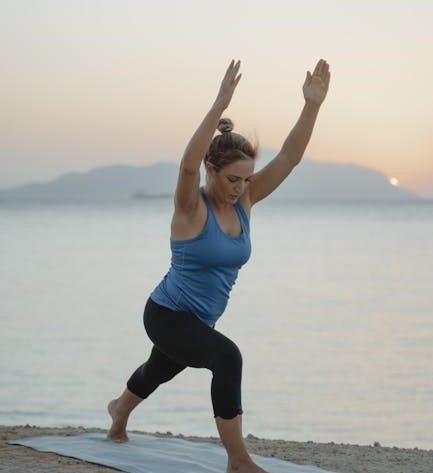The Cawthorne-Cooksey exercises are a set of balance-retraining exercises designed to reduce dizziness and improve vestibular function․ Developed by Cawthorne and Cooksey‚ they help manage vertigo‚ labyrinthitis‚ and other vestibular disorders through targeted eye‚ head‚ and body movements․
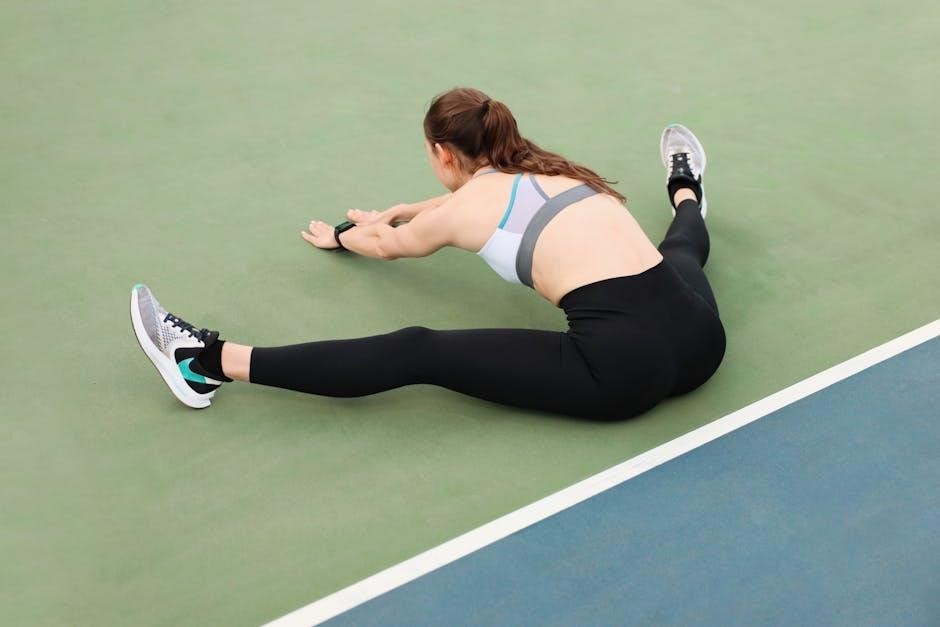
What are Cawthorne-Cooksey Exercises?
The Cawthorne-Cooksey exercises are a series of balance-retraining movements designed to help individuals recover from vestibular dysfunction or disorders․ These exercises aim to build tolerance to abnormal balance signals in the brain‚ reducing dizziness and restoring balance․ They were originally developed to address unilateral vestibular loss‚ such as after surgery or conditions like vestibular neuritis‚ labyrinthitis‚ or Meniere’s disease․ The exercises include eye movements‚ head movements‚ and body practices‚ performed gradually to improve brain compensation․ They are simple‚ can be done at home‚ and are tailored to help individuals return to normal activities by enhancing vestibular function and reducing vertigo symptoms․
The Purpose of the Exercises
The primary purpose of the Cawthorne-Cooksey exercises is to improve balance‚ reduce dizziness‚ and enhance overall vestibular function․ These exercises aim to help individuals regain control over their equilibrium by strengthening the connection between the brain‚ eyes‚ and body․ By gradually challenging the vestibular system‚ the exercises promote compensation for any imbalances caused by inner ear or neurological issues․ The ultimate goal is to restore functional abilities‚ allowing individuals to perform daily activities with greater confidence and stability․ Regular practice helps patients adapt to their condition and achieve long-term relief from symptoms like vertigo and unsteadiness․
History and Development
The Cawthorne-Cooksey exercises were first introduced in the mid-20th century by British otologists Dr․ Terence Cawthorne and Dr․ Harold Cooksey․ They developed these exercises as a structured approach to vestibular rehabilitation‚ aiming to address balance disorders and dizziness caused by inner ear conditions․ Initially designed for patients with unilateral vestibular lesions‚ the exercises were later adapted for broader use; The method gained popularity due to its effectiveness in promoting vestibular compensation and improving functional abilities․ Over time‚ the exercises have been refined‚ but their core principles remain unchanged․ They are now a cornerstone of vestibular rehabilitation worldwide․

Benefits of Cawthorne-Cooksey Exercises
Cawthorne-Cooksey exercises reduce dizziness‚ improve balance‚ and enhance vestibular function‚ aiding patients in regaining independence and returning to daily activities effectively․
Improving Balance and Reducing Dizziness
The Cawthorne-Cooksey exercises are highly effective in improving balance and reducing dizziness by strengthening the vestibular system․ These exercises target the inner ear and brain connection‚ enhancing equilibrium and stability․ Patients often experience a significant reduction in vertigo episodes‚ allowing them to perform daily tasks with greater confidence․ The exercises gradually challenge the body’s balance mechanisms‚ promoting long-term improvements in coordination and posture․ By addressing the root causes of dizziness‚ these exercises help individuals regain control over their movements and reduce the risk of falls‚ ultimately improving overall quality of life and independence․
- Enhances vestibular function and balance․
- Reduces frequency and severity of dizziness․
- Improves coordination and posture․
Enhancing Vestibular Compensation
Cawthorne-Cooksey exercises are designed to enhance vestibular compensation‚ the process by which the brain adapts to inner ear damage or dysfunction․ By promoting neuroplasticity‚ these exercises help the brain relearn balance and coordination․ Over time‚ patients experience reduced symptoms of dizziness and improved overall vestibular function․ The exercises target the body’s ability to adapt to changes in movement and posture‚ strengthening the connection between the inner ear‚ brain‚ and muscles․ This compensation reduces reliance on visual or sensory cues‚ restoring natural balance responses․ Consistent practice ensures long-term improvement in vestibular stability and overall quality of life․
- Strengthens brain adaptation to inner ear issues․
- Improves coordination and balance naturally․
- Reduces reliance on sensory or visual cues․
Returning to Normal Activities
Cawthorne-Cooksey exercises are tailored to help individuals gradually return to their normal activities by improving balance‚ reducing dizziness‚ and restoring confidence․ These exercises focus on reintroducing everyday movements and tasks‚ such as bending‚ turning‚ or walking on uneven surfaces․ By practicing these motions in a controlled manner‚ patients can safely reintegrate into their daily routines․ The exercises also emphasize the importance of maintaining proper posture and eye focus during activities‚ which helps reduce the risk of falls or discomfort․ Over time‚ individuals can resume hobbies‚ work‚ and social activities with greater ease and independence‚ enhancing their overall quality of life․
- Reintroduce everyday movements and tasks․
- Improve balance and reduce dizziness during activities․
- Restore confidence for daily routines and hobbies․

How to Perform Cawthorne-Cooksey Exercises
Cawthorne-Cooksey exercises involve a structured approach‚ starting with simple eye and head movements‚ progressing to balance practices‚ and incorporating everyday activities to enhance vestibular function and stability․
- Begin with eye exercises while keeping the head still․
- Gradually introduce head movements with focused gaze․
- Practice balance and coordination in a safe environment․
Eye Movements (Head Still)
E
ye movements are foundational in Cawthorne-Cooksey exercises‚ aiming to improve coordination and reduce dizziness․ Start by focusing on a stationary object‚ shifting gaze between near and far points․ Practice tracking objects moving horizontally and vertically‚ ensuring smooth transitions․ Perform exercises slowly‚ holding focus for a few seconds․ Repeat 5-10 times‚ gradually increasing frequency․ These movements enhance vestibular-ocular reflexes‚ improving balance and reducing symptoms․ Consistency is key to achieving long-term benefits․ Always maintain a stable head position during these exercises to maximize effectiveness․
Head Movements (Eyes Fixed on a Point)
Head movements with eyes fixed on a point are designed to improve balance and reduce dizziness․ Start by focusing on a stationary object‚ then slowly move your head from side to side or up and down․ Keep your eyes locked on the point throughout the movement․ Gradually increase the speed and range of motion as comfort allows․ Practice these exercises in both sitting and standing positions․ Regular repetition helps strengthen vestibular function and enhances coordination․ Ensure movements are smooth and controlled to avoid triggering symptoms․ These exercises are essential for improving overall stability and reducing discomfort during daily activities․
Body Movements and Balance Practices
Body movements and balance practices are crucial for improving stability and coordination․ Start with standing exercises‚ such as shifting weight from one foot to the other or standing on different surfaces (e․g․‚ firm floor‚ soft cushion)․ Progress to more dynamic movements like bending‚ reaching‚ or walking while maintaining focus on a fixed point․ These exercises help enhance proprioception and vestibular function‚ reducing dizziness․ Practice activities that mimic daily tasks‚ such as turning or changing direction‚ to improve functional balance․ Begin with support nearby and gradually reduce assistance as confidence grows․ Regular practice strengthens balance systems and promotes independence in daily activities․
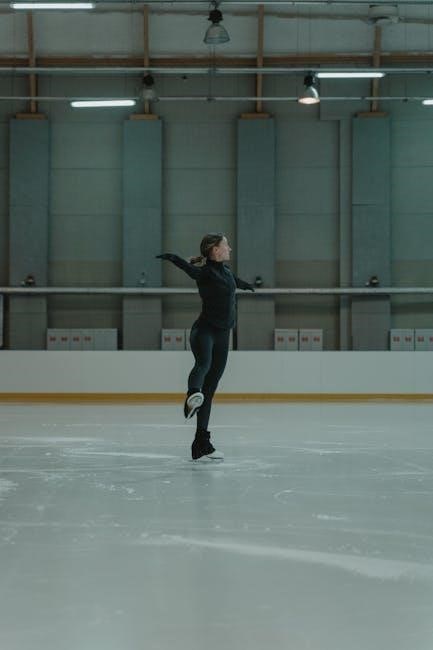
Progression of Exercises
The progression involves tailoring exercises to individual needs and abilities‚ moving from simple to advanced movements‚ and adapting based on symptoms and progress to ensure safe and effective recovery;
Starting with Simple Exercises
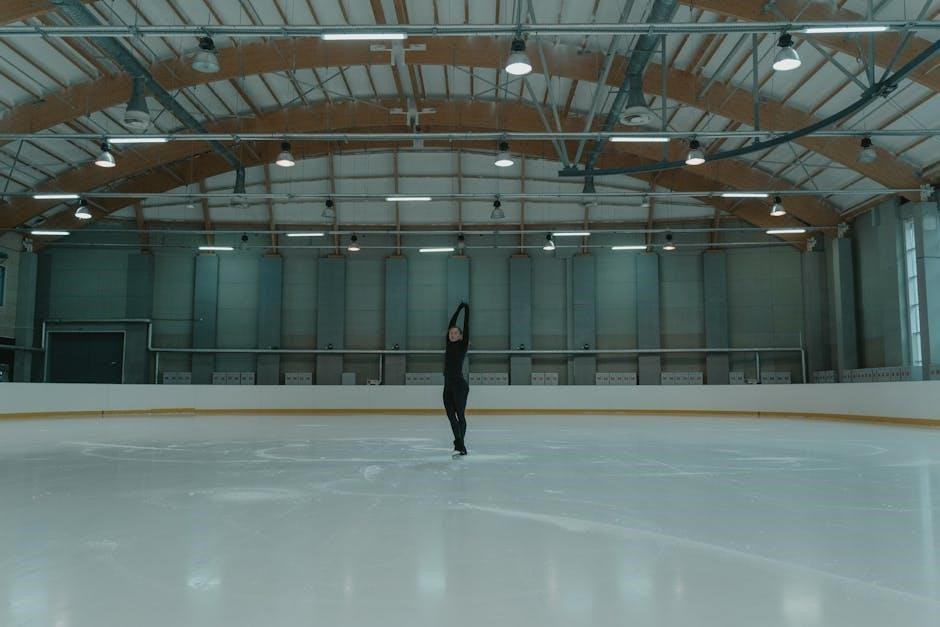
Begin with basic movements to build a strong foundation for recovery․ Start with eye exercises‚ such as focusing on a stationary object while moving the head slowly․ Progress to sitting balance tasks‚ like standing without support‚ ensuring stability before advancing․ Gentle head movements and visual fixation exercises are also introduced early to improve coordination․ These simple exercises help the body adapt to changes in balance and reduce dizziness․ Perform them in a safe‚ stable environment‚ gradually increasing difficulty as symptoms improve․ This initial phase is crucial for building confidence and preparing for more complex movements in later stages of the program․
Gradually Increasing Difficulty
As symptoms improve‚ gradually introduce more challenging exercises to continue progress․ Begin by adding slow‚ controlled head movements while performing tasks like reading or tracking objects․ Incorporate standing exercises with eyes closed or on soft surfaces to enhance balance․ Progress to dynamic movements‚ such as walking while turning the head or changing direction․ These steps help strengthen vestibular function and improve overall stability․ Avoid rushing the process‚ as gradual progression ensures safety and effectiveness․ Increasing difficulty helps the brain adapt to new challenges‚ promoting long-term recovery and reducing the likelihood of recurring dizziness or imbalance․
Incorporating Everyday Activities
Incorporating everyday activities into your exercise routine enhances balance and reduces dizziness in real-world scenarios․ Start by performing simple tasks‚ such as walking while focusing on a fixed point or bending to pick up objects․ Gradually introduce more complex activities‚ like reading or cooking‚ while incorporating gentle head movements․ These practical exercises help improve coordination and confidence in daily life․ Consistency is key‚ as regular practice strengthens vestibular function and promotes long-term recovery․ By integrating these exercises into your routine‚ you can better manage symptoms and return to normal activities with greater ease and stability․

Safety and Precautions
When performing Cawthorne-Cooksey exercises‚ ensure your environment is clear of tripping hazards․ Perform each movement slowly and avoid rushing․ Supervision by a healthcare professional is recommended to tailor exercises to your specific needs and prevent injuries‚ especially for those with severe balance issues․
Ensuring a Safe Environment
To ensure a safe environment for Cawthorne-Cooksey exercises‚ clear the space of tripping hazards like rugs‚ cords‚ or furniture․ Use a stable chair or wall for support if needed․ Ensure proper lighting to reduce fall risks․ Avoid performing exercises near stairs or uneven surfaces․ For individuals with severe dizziness‚ supervision is recommended․ Place a soft cushion or bed nearby in case of imbalance․ Keep emergency contact numbers accessible․ These precautions help minimize risks and create a secure setting for effective exercise performance․
Performing Exercises Slowly
Performing Cawthorne-Cooksey exercises slowly is essential to avoid exacerbating dizziness or discomfort․ Sudden or rapid movements can worsen symptoms‚ so it’s crucial to execute each step deliberately․ Start with gentle‚ controlled motions‚ allowing your body to adapt gradually․ If dizziness arises‚ pause and rest before continuing․ Slow progression helps the vestibular system adjust and strengthens balance mechanisms effectively․ Avoid rushing through exercises‚ as this may lead to accidents or increased symptoms․ Consistency and patience are key to maximizing benefits and ensuring safety․ Always prioritize slow‚ steady movements to achieve optimal results from the exercises․
Seeking Professional Guidance
Seeking professional guidance is crucial when performing Cawthorne-Cooksey exercises‚ especially for individuals with severe vestibular issues․ A healthcare professional‚ such as a vestibular rehabilitation therapist‚ can provide personalized advice and ensure exercises are performed safely and effectively․ They can tailor the program to individual needs‚ addressing specific symptoms and progress․ Professional guidance helps prevent overexertion and ensures proper technique‚ reducing the risk of injury or worsening symptoms․ Additionally‚ experts can monitor progress and adjust the exercises as needed․ Consulting a professional is particularly important for those with underlying conditions or uncertain about their ability to perform the exercises correctly․
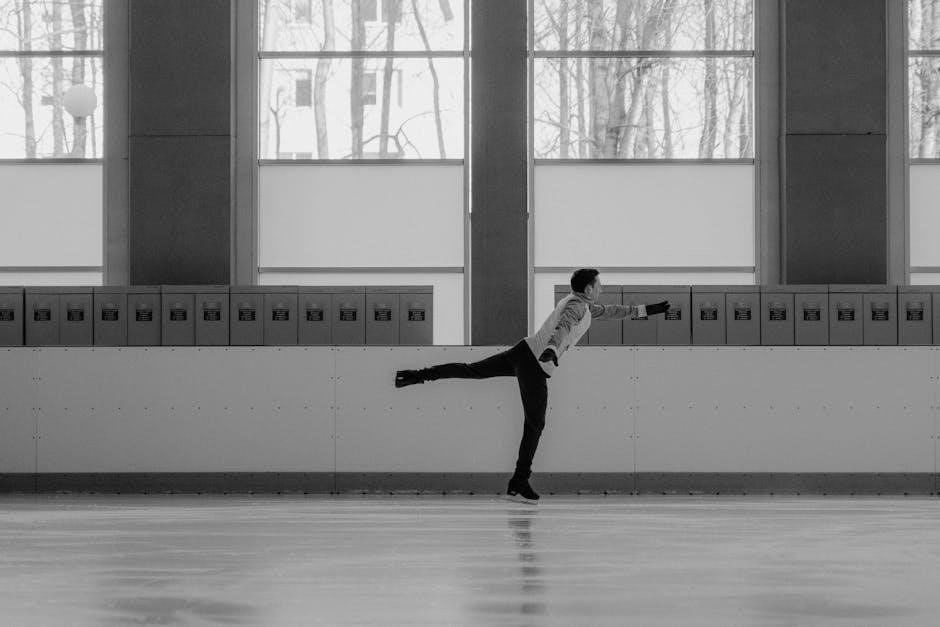
Conditions Treated with Cawthorne-Cooksey Exercises
Cawthorne-Cooksey exercises effectively treat vestibular neuritis‚ labyrinthitis‚ Meniere’s disease‚ BPPV‚ and PPPD‚ addressing balance issues and dizziness through targeted vestibular rehabilitation techniques․
Vestibular Neuritis and Labyrinthitis
Vestibular neuritis and labyrinthitis are inner ear disorders causing vertigo‚ dizziness‚ and imbalance․ Cawthorne-Cooksey exercises are highly effective for these conditions‚ promoting vestibular rehabilitation․ By improving balance and reducing symptoms‚ they aid recovery‚ enhancing the brain’s ability to compensate for inner ear damage․ Patients often experience significant relief from vertigo and improved stability․ The exercises are tailored to address the specific challenges posed by these conditions‚ making them a cornerstone of treatment․ Regular practice helps restore normal function and reduce discomfort‚ enabling individuals to regain their independence and quality of life․
Meniere’s Disease
Meniere’s Disease‚ a disorder of the inner ear‚ causes vertigo‚ hearing loss‚ and tinnitus․ Cawthorne-Cooksey exercises are beneficial for managing vertigo symptoms by improving vestibular function and balance․ These exercises help reduce the frequency and severity of vertigo episodes‚ enhancing overall stability․ While they do not address hearing loss or tinnitus directly‚ they aid the brain in compensating for inner ear dysfunction․ Consistent practice can significantly improve quality of life for those with Meniere’s Disease‚ helping them better manage symptoms and regain confidence in daily activities․ Professional guidance is recommended to tailor exercises to individual needs and ensure safe progression․
Benign Paroxysmal Positional Vertigo (BPPV)
Benign Paroxysmal Positional Vertigo (BPPV) is a condition characterized by intense‚ short-term vertigo episodes triggered by specific head movements․ Cawthorne-Cooksey exercises are highly effective in managing BPPV symptoms by improving vestibular function and reducing dizziness․ These exercises focus on promoting central nervous system compensation‚ helping the brain adapt to inner ear dysfunction․ Regular practice can significantly reduce the frequency and intensity of vertigo attacks‚ improving balance and overall stability․ The exercises are particularly beneficial for patients with BPPV‚ as they target the root cause of symptoms and promote long-term recovery․ Consistency and proper technique are key to achieving optimal results․
Persistent Postural-Perceptual Dizziness (PPPD)
Persistent Postural-Perceptual Dizziness (PPPD) is a chronic condition characterized by persistent non-spinning dizziness‚ unsteadiness‚ and heightened sensitivity to motion․ Cawthorne-Cooksey exercises are beneficial for managing PPPD symptoms by improving balance‚ reducing dizziness‚ and enhancing vestibular compensation․ These exercises help patients gradually adapt to movements and environments that previously triggered discomfort․ By strengthening vestibular function and promoting neuroplasticity‚ the exercises enable individuals to better cope with daily activities․ Consistent practice can lead to significant improvement in quality of life‚ reducing the impact of PPPD on daily functioning and emotional well-being․ The exercises are tailored to address the unique challenges of PPPD‚ making them a valuable tool in its management․
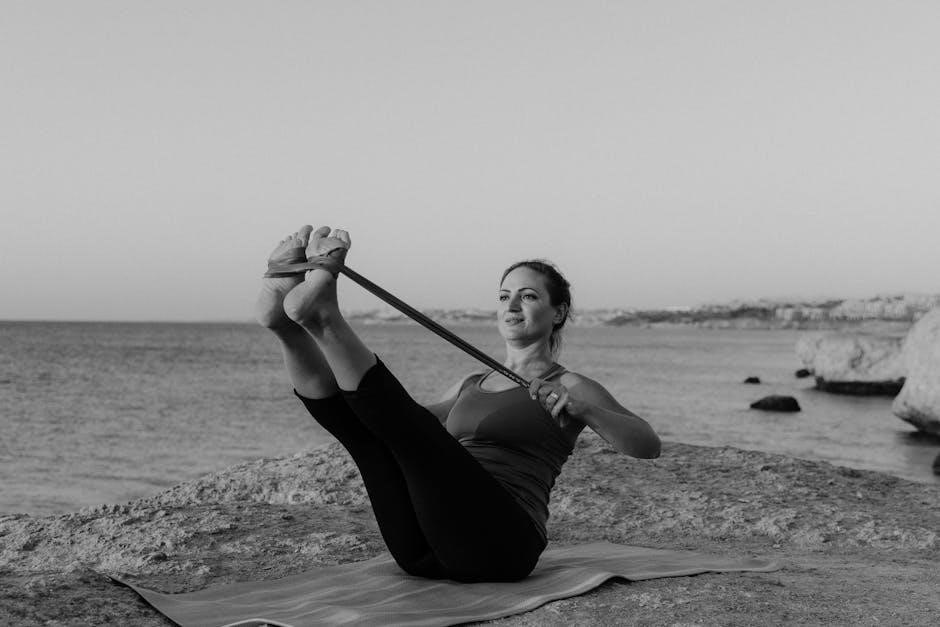
Download and Access
The Cawthorne-Cooksey exercises PDF is widely available online‚ often provided by healthcare professionals or downloadable from reputable medical websites․ It serves as a comprehensive guide for patients․
How to Obtain the Cawthorne-Cooksey Exercises PDF
The Cawthorne-Cooksey exercises PDF can be obtained through various sources․ Healthcare professionals‚ such as vestibular physiotherapists or ENT specialists‚ often provide it to patients as part of their treatment plan․ Additionally‚ it is available for download on official medical websites‚ vestibular rehabilitation therapy platforms‚ and some academic resources․ Patients can also search for it using specific keywords like “Cawthorne-Cooksey exercises PDF” on reputable search engines․ Ensure the source is trustworthy to maintain the accuracy and safety of the exercises․ Always consult a professional before starting the program to tailor it to individual needs and avoid potential risks․
Using the PDF as a Guide

The Cawthorne-Cooksey exercises PDF serves as a comprehensive guide for individuals seeking to improve their balance and reduce dizziness․ It provides step-by-step instructions‚ illustrations‚ and explanations to help users perform each exercise correctly․ The PDF is structured to allow gradual progression‚ ensuring that individuals can start with simple tasks and build up to more challenging ones․ It emphasizes the importance of consistency and patience‚ offering tips on how to incorporate the exercises into daily routines․ The guide also includes safety precautions and advice on when to seek professional help․ By following the PDF‚ users can confidently navigate their rehabilitation journey and track their progress effectively․
The Cawthorne-Cooksey Exercises PDF is an essential tool for guiding individuals through their vestibular rehabilitation journey‚ offering structured routines to enhance balance and reduce dizziness effectively․
Importance of Consistency and Patience
Consistency and patience are crucial when performing the Cawthorne-Cooksey exercises․ These exercises are designed to gradually improve vestibular function‚ and progress may be slow but steady․ Rushing the process can lead to setbacks or increased dizziness․ It’s essential to follow the routine daily‚ as outlined in the PDF guide‚ and avoid skipping steps․ Patience is key‚ as the brain and inner ear system need time to adapt and compensate․ Celebrating small improvements helps maintain motivation․ Over time‚ consistent practice leads to significant improvements in balance‚ reducing the severity of dizziness and enhancing overall quality of life․
Long-Term Benefits of the Exercises
The long-term benefits of Cawthorne-Cooksey exercises are significant for individuals with vestibular issues․ Regular practice leads to lasting improvements in balance‚ reducing the frequency and severity of dizziness․ Over time‚ the exercises enhance overall stability‚ making daily activities easier and safer․ Patients often experience increased confidence and independence‚ as their reliance on assistive devices diminishes․ The exercises also promote better posture and coordination‚ reducing the risk of falls․ By strengthening vestibular function‚ these exercises provide a sustainable solution‚ improving quality of life and enabling individuals to engage fully in work‚ hobbies‚ and social activities without the hindrance of dizziness or imbalance․
